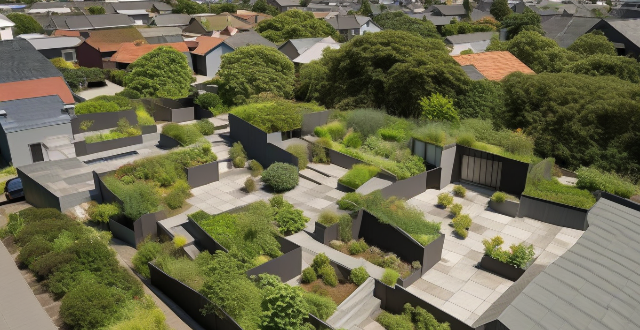Green roofs and walls contribute to city greening by improving air quality, mitigating the urban heat island effect, enhancing biodiversity, managing stormwater, increasing energy efficiency, providing aesthetic value, and promoting community well-being.

How Do Green Roofs and Walls Contribute to City Greening?
Green roofs and walls are innovative approaches to urban greening that offer numerous benefits for cities. They involve covering the rooftops and facades of buildings with vegetation, creating vertical gardens and horizontal gardens in the sky. These green spaces not only enhance the aesthetic appeal of urban areas but also contribute significantly to environmental sustainability and urban ecology. Let's explore how green roofs and walls contribute to city greening in detail:
1. Improving Air Quality
- Reducing Pollutants: Plants on green roofs and walls absorb airborne pollutants, such as carbon dioxide (CO2), nitrogen oxides (NOx), and sulfur dioxide (SO2). This helps improve air quality by reducing the concentration of harmful substances.
2. Mitigating the Urban Heat Island Effect
- Reducing Temperature: Vegetation on green roofs and walls provides shade and evaporative cooling, which can lower the surface temperature of buildings. This helps mitigate the urban heat island effect, making cities more comfortable and reducing energy consumption for cooling.
3. Enhancing Biodiversity
- Habitat Creation: Green roofs and walls provide habitats for various species of plants, insects, birds, and small animals. This increases biodiversity in urban areas, promoting a healthier ecosystem within the city.
4. Managing Stormwater
- Reducing Runoff: The plants and soil on green roofs and walls help absorb and retain rainwater, reducing the amount of stormwater runoff. This alleviates stress on urban drainage systems and reduces the risk of flooding.
5. Increasing Energy Efficiency
- Insulation: The layers of soil and vegetation on green roofs act as insulators, helping to keep buildings cooler in summer and warmer in winter. This can lead to reduced heating and cooling costs, making buildings more energy-efficient.
6. Providing Aesthetic Value
- Beautifying Cities: Green roofs and walls add a touch of nature to the concrete jungle, creating visually appealing spaces that enhance the overall beauty of cities. They can transform dull, lifeless areas into vibrant, living landscapes.
7. Promoting Community Well-being
- Mental Health Benefits: Exposure to green spaces has been shown to have positive effects on mental health, reducing stress and promoting well-being. Green roofs and walls can provide accessible natural environments for city dwellers, contributing to their overall happiness and satisfaction with urban life.
In conclusion, green roofs and walls play a crucial role in city greening by addressing various environmental challenges faced by urban areas. From improving air quality and mitigating heat island effects to enhancing biodiversity and managing stormwater, these green spaces offer multiple benefits that make cities healthier, more sustainable, and more livable. As cities continue to grow and develop, incorporating green roofs and walls into urban planning will be essential for creating resilient, eco-friendly communities.